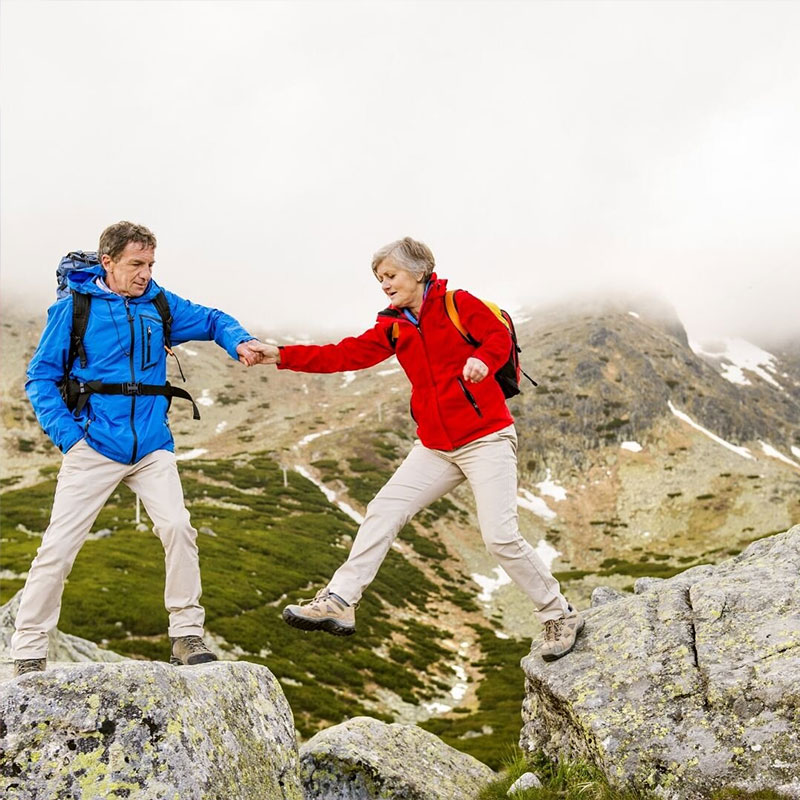
We all know them, and have from time to time felt a small tinge of jealousy when we see them. Your 75 year old neighbor that still shreds on his surfboard every morning. That fully gray couple briskly passing you on their way to the nearest mountain peak. It is easy to attribute these anomalies of the human race as winners of some lucky gene lottery that have enabled their joints to stay pain free and healthy well into old age. While genes do play a major role in joint health, there are multiple nutrients and natural therapies that can help keep our joints as active and high functioning as we ultimately want to be ourselves.
Diet and Weight Control
Maintaining a healthy weight is key to the prevention of joint damage, as excessive pounds on weight bearing joints such as the knees can be destructive. However, research indicates that the nutrients we get from our diet can also play a major role in preventing joint degeneration. Omega three fatty acids, vitamin D, and vitamin K have all demonstrated to be beneficial in decreasing the inflammation, pain, and cartilage degeneration found in osteoarthritis, the fastest growing cause of joint disability worldwide. Eating a diet rich in healthy fats such as wild caught fresh fish, nuts, and olive oil can increase omega three content in the body while green, leafy vegetables will provide vitamin K. Thirty minutes of sun exposure will provide adequate vitamin D for most individuals, or supplementation with this hormone may be appropriate.
Exercise
Another key aspect to maintaining healthy joint function is exercise. As we age the structures connecting our muscles to bones, called tendons, can lose their elasticity and strength. This problem is further exacerbated by conditions such as rheumatoid arthritis or osteoarthritis. Exercise can play a key role in regaining and maintaining the integrity of these tissues. In particular, resistance or strength training exercises such as squats, push ups, or lifting free weights have shown to improve tendon strength. Additionally, the protective tissue in our joints known as cartilage seems to benefit from exercise. Weight bearing exercises as well as cyclic loading exercises like walking and cycling are beneficial in increasing joint lubrication as well as improving cartilage integrity. Another aspect of musculoskeletal aging improved by weight bearing exercise is bone mineral density. This refers to the fact that as we age, our bones become less dense and lose the minerals such as calcium that provide structure and strength to our skeletal system. This can lead to numerous problems, mainly manifesting as joint pain and fractures. Weight bearing exercise has shown in numerous studies to promote bone remodeling and thus increase bone density, reducing fracture incidence as well as pain.
Hormone Balance and Inflammatory Control
The truth is joint inflammation and damage is a complex process with many factors contributing to the process overall. Hormonal imbalances play a major role, as estrogen helps us deposit essential minerals for bone density, like calcium, into our bone tissue. As we age and estrogen levels decline, so does the density of our bones! Inflammatory processes like autoimmunity, infection, and injury will also contribute to degrading joints and need to be managed accordingly. At BioMed Health Center, we assess the individual as whole when considering joint pain and inflammation so that we can find the root cause of the issue and provide the most comprehensive and safe treatment options. Schedule a complimentary consultation to get to the root of your pain.
References:
Rayman MP. Diet, nutrition and osteoarthritis. BMC Musculoskeletal Disorders. 2015;16(Suppl 1):S7. doi:10.1186/1471-2474-16-S1-S7.
Cooney JK, Law R-J, Matschke V, et al. Benefits of Exercise in Rheumatoid Arthritis. Journal of Aging Research. 2011;2011:681640. doi:10.4061/2011/681640.